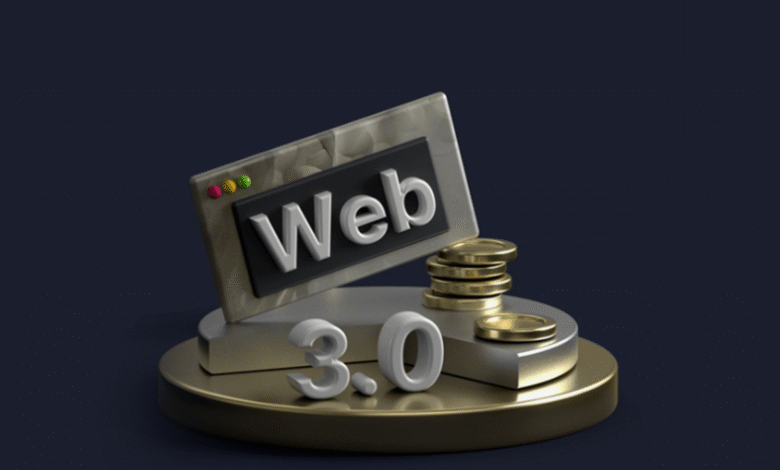Top Web3 Investment Opportunities in 2025 for Growth

As we approach 2025, the digital economy continues to evolve at an unprecedented pace. Among the most transformative paradigms is Web3—the decentralised iteration of the internet built on blockchain, smart contracts, and peer-to-peer infrastructure. Web3 is no longer a speculative concept but a rapidly maturing ecosystem poised to disrupt traditional industries, including finance, gaming, social media, and digital identity.
For investors seeking long-term growth, diversification, and innovation exposure, Web3 presents compelling opportunities. From decentralised finance (DeFi) protocols to non-fungible tokens (NFTs), layer 1 and layer 2 blockchain networks, and decentralised autonomous organisations (DAOs), the Web3 investment landscape in 2025 offers an abundance of high-potential assets backed by strong developer communities and increasing institutional interest.
Investment Thesis Behind Web3
The core thesis of Web3 investing revolves around ownership, interoperability, and decentralisation. Users no longer simply consume content; they actively participate in networks, own their data, and help govern platforms. Unlike traditional Web 2.0 models dominated by centralised tech giants such as Meta, Google, and Amazon, Web3 empowers users through tokenised incentives and transparent governance structures.
In 2025, the convergence of artificial intelligence, metaverse technologies, and blockchain scalability solutions is expected to catalyse widespread adoption. This intersection creates an optimal climate for strategic investment in projects that offer real-world utility, strong tokenomics, and proven track records.
Most Promising Web3 Sectors to Watch in 2025
The most lucrative Web3 investments are likely to emerge from several high-growth verticals. The DeFi sector, led by platforms such as Aave, MakerDAO, and Compound, continues to democratise access to financial services. The ongoing tokenisation of real-world assets (RWAs), such as real estate, carbon credits, and fine art, is further amplifying the appeal of DeFi protocols as legitimate infrastructure for the future of finance.
NFT ecosystems are also undergoing a renaissance. While the speculative hype of 2021 has faded, NFTs are evolving into utility-based digital assets integrated with gaming, loyalty programs, intellectual property rights, and digital identity. Projects like Immutable, Pudgy Penguins, and Animoca Brands are leading this shift, combining entertainment with blockchain-enabled value capture.

Simultaneously, layer 1 blockchains such as Ethereum, Solana, and Avalanche remain foundational pillars of the Web3 space. However, 2025 is witnessing a pivot toward layer 2 scaling solutions such as Optimism, Arbitrum, and zkSync that promise reduced gas fees and improved transaction speeds. These scaling protocols are essential for mainstream adoption and are attracting both capital and talent at a rapid clip.
Moreover, Web3 infrastructure plays a critical role in enabling seamless user experiences. Projects like Chainlink (oracle services), Filecoin (decentralised storage), and The Graph (blockchain indexing) are indispensable to the functioning of decentralised applications (dApps) and are likely to see continued investment as the ecosystem scales.
Role of Institutional Adoption and Regulatory Clarity
One of the most significant drivers for Web3 investment growth in 2025 is the increasing institutional embrace of blockchain assets. Hedge funds, venture capital firms, and even sovereign wealth funds are allocating capital into tokenised assets, DAOs, and Web3-focused startups. Names like a16z Crypto, Sequoia Capital, and Pantera Capital have already raised multi-billion-dollar funds dedicated to blockchain innovation.
At the same time, regulatory frameworks are becoming more defined in key markets such as the U.S., EU, and Southeast Asia. The MiCA regulation in Europe, along with updated SEC guidance, is offering greater legal clarity that reduces investor risk and fosters innovation. Regulatory certainty is especially critical for compliance-focused investments, including stablecoins, security tokens, and regulated exchanges.
Risk and Return Profile of Web3 Assets
Despite their high potential, Web3 investments carry unique risks. Volatility, nascent technology, regulatory ambiguity, and cybersecurity threats remain prevalent. Therefore, investors must conduct thorough due diligence and diversify across asset classes, use cases, and development stages. Fundamental metrics such as Total Value Locked (TVL), active user base, GitHub activity, and governance participation are useful indicators of project health and longevity.
Long-term investors are increasingly using decentralised analytics platforms like Dune Analytics, Token Terminal, and Messari to evaluate project fundamentals and track protocol revenue. These tools enhance transparency and support data-driven decision-making.
Summary
As the line between the digital and physical worlds continues to blur, Web3 is emerging not just as a new technological paradigm but as an entirely new asset class. In 2025, the best Web3 investments will be those grounded in strong fundamentals, adaptive to regulation, and aligned with real-world utility. With strategic diligence, an investor can not only ride the wave of innovation but also shape the future of a decentralised internet.
